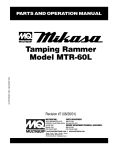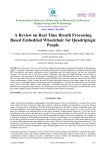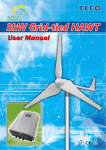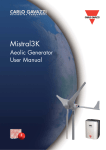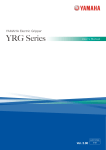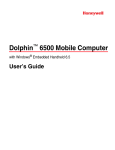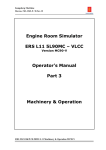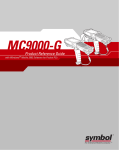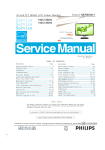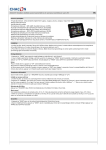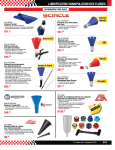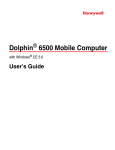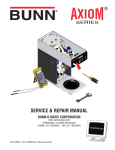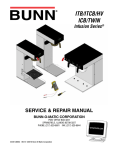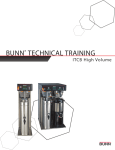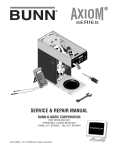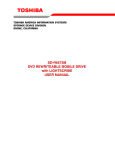Download TECHNICAL & SERVICE MANUAL dados 9 plus/13 plus/xl
Transcript
TECHNICAL & SERVICE MANUAL dados 9 plus/13 plus/xl V 10/2013 CONTENTS 1.Safety Precaution 1.1 Installation ……………………………………………………………. .............................................. 2 1.2 Caution 1.3 Operation ……………………………………………………………............................................ 2 …………………………………………………………….............................................. 2 ……………………………………………………………. ................................................ 2 2.Specification 3.Outer Dimension ……………………………………………………………........................................... 4 …………………………………………………………… ........................................ 5 4. Refrigerant cycle diagram …………………………………………………............................................... 6 5.PCB drawing & wiring diagram …………………………………………… ............................................. 7 6.Unit dissassembly sequence ………………………………………………………................................. 10 6.1 Casing Disassembly ………………………………………………………........................................... 10 6.2 Internal Parts Dissassembly ............................................................................................................. 13 7.Feature ............……………………………………………………………................................................. 16 7.1 Parts of the air conditioner ……………………………………………………… .................................. 16 7.2 Accessories …………………………………………………… .................................................... 17 8. Electronic Function …………………………………………………………… ........................................ 18 8.1 Function ……………………………………………………… ............................................................... 18 8.2 Controller Specifications ……………………………………………………… ...................................... 18 8.3 Controller Structure ……………………………………………………… .............................................. 18 8.4 Sensor Definitions ……………………………………………………… ................................................ 18 8.5 Mode ……………………………………………………… .................................................................... 18 8.6 Timer Setting ……………………………………………………… ........................................................ 20 8.7 Sleep ……………………………………………………… .................................................................... 20 8.8 Protection Function ……………………………………………………… .............................................. 20 9.Basic test procedure …………………………………………………………… ...................................... 23 9.1 Defective Compressor ……………………………………………………….......................................... 23 9.2 Sealed refrigeration repairs ……………………………………………………… .................................. 24 9.3 Fan Motor ……………………………………………………… ............................................................. 26 9.4 Capacitor ………………………………………………………………… ............................................... 26 10.Characteristic of temperature sensor …………………………………… ............................................. 28 11. Trouble shooting …………………………………………………………… .......................................... 29 Appendix …………………………………………………………… ........................................................... 31 Trouble shooting problems …………………………………………………………… ................................ 31 Trouble shooting for electrical system …………………………………… ................................................ 32 2 Safety precaution 1. Safety precaution 1.1 Installation For electrical work, contact the an authorized service center. Do not disassemble or repair the product by yourself. Sharp edges could cause injury, be especially careful of the case edges and the fins on the condenser and evaporator. Be sure the installation area does not deteriorate with age. Take care to ensure that power cable could not be pulled out or damaged during operation. Do not place anything on the power cable. Do not plug or unplug the power supply plug during operation. Do not store or use flammable or combustible gas near the product. When there are flammable gas leaks, turn off the gas and open a window for ventilation before turning the product on. If strange sounds, or small or smoke comes from product, turn the breaker off. When the product is soaked (flooded or submerged), contact an Authorized service center. Pay attention that water does not enter the product. Turn the main power off when cleaning or maintaining the product. When the product is not in use for a long time, disconnect the power supply plug or turn off the breaker. 1.2 Caution Always check that there are not gas (refrigerant) leakage after installation, otherwise please repair the product. After installing the drain hose make sure that water is drained away properly. Install the product only on a flat surface. Do not install the product in places where hot air outlet could damage the neighborhoods. Use two or more people to lift and transport the product. Do not install the product where it will be exposed to sea wind (salt spray) directly. 1.3 Operation Do not expose the skin directly to cool air for long periods of time. (Do not sit in front of the air outlet). Do not use the product for special purposes, such as preserving foods, works of art, etc. Do not block the inlet or outlet of air flow. Use a soft cloth to clean the air conditioner. Do not use harsh detergents, solvents, etc. Do not touch the metal parts of the product when removing the air filter. They are very sharp. Do not step on or put anything on the product. Always insert the filter securely. Clean the filter every two weeks or more often if necessary. Do not insert hands or other object through the air inlet or outlet while the product is operated. Do not drink the water drained from the product. 3 Safety precaution Replace the all batteries in the remote control with new ones of the same type. Do not mix old and new batteries or different types of batteries. Do not recharge or disassemble the batteries. Do not dispose of batteries in a fire. If the liquid from the batteries gets onto your skin or clothes, wash it well with clean water. Do not use the remote control when the batteries leak. 4 Specification 2. Specification Model Nameplate marking DADOS 9 PLUS Moisture Removal(30°C,RH80%) DADOS XL Ph-VHz W W W W/W 2200/2300 820 625 2.70/3.70 2900/3000 1100 925 2.60/3.10 3100/3200 1100 960 2.80/3.30 g bar L/DAY m³/h dB(A) R410A/430g 33.5/10.5. 30 280/300/350 40/37/38 R410A/620g 34.0/11.2 50 290/310/360 42/39/38 R410A/805g 32.5/11.4 55 290/360/420 48/43/40 29/32.7 W500xD500xH540 W570xD570xH660 32/36.3 34/38.5 Power supply Cooling Capacity Cooling Power consumption Heating Power consumption Cooling EER/COP System data Refrigerant type Design pressure (Hi/Lo) DADOS 13 PLUS air flow (Hi/Mi/Lo) Noise level (Hi/Mi/Lo) Dimension&Weight Dimension (WxDxH) Packing (WxDxH) Net/Gross weight System Details Compressor Model Type Capacity Input Rated current(RLA) Locked rotor Amp(LRA) Thermal protector Capacitor Refrigerant oil Fan Motor Model Input Capacitor Lower speed Capacitor Mi Lower speed Capacitor Lo Speed(hi/mi/lo) ±50 Evaporator Number of rows Tube pitch(a)x row pitch(b) Fin spacing Fin type Tube outside dimension type Axial length x height x width Number of circuits Condenser Number of rows Tube pitch(a)x row pitch(b) Fin spacing Fin type Tude outside dimension type Axial length x height x width Number of circuits The standard is EN14511 -2:2007 mm mm kg 1φ,220V-240V~50Hz KRRC072ELJC-A W W A A CC 1665W±5% 655W±5% 2.85A±5% 21.1A±5% B125-140-241C 20uF 450V 240 MD99-3 85/44/32 W 5uF 450V N/A N/A 1030/830/730 Rpm 2 mm FPI mm KA-C098ELBC-E Rotary 2268W±5% 855W±5% 3.8A±5% 20A±5% T0705/46 25uF 450V 300 317.7x336x25.4 2 2 mm FPI mm mm 400x357x38.1 1 test condition is 35°C db/ 24°C wb 5 3 21x12.7 18 Hydrophilic aluminum Ф7 inner groove tube 317.7x336x38.1 2 3 21x12.7 18 aluminum Ф7 inner groove tube 400x357x50.8 1 MD97-3 138/113/92 10uF 450V 950Rpm 15uF 450V 780Rpm 1310/1220/1120 3 317.7x336x38.1 2 4 400x357x63.5 1 Outer dimension 3. Outer dimension 6 Refrigerant cycle diagram 4. Refrigerant cycle diagram The figure below is a brief description of the important components and their function in what is called the refrigeration system 7 PCB drawing & wiring diagram 5. PCB drawing & wiring diagram The below picture is PCB schematic: 800161-0Y-A-5-S-Q 1 2 3 4 5 6 7 8 RY9 A P9 P24 C16 10uF KIA7042P P8 VCC CN2 2 1 R33 510 P9 9 P10 10 P11 11 P12 12 P13 13 P14 14 P15 15 P16 16 P27 27 7 26 8 25 9 24 10 23 11 22 12 21 13 20 14 19 15 18 16 17 BUZZER RY3 RY4 RY5 BUZ R10 100 R11 2K X103 27P27 26P26 R33 PUMP PUMP/LF RY7 12V X105 RY6 OUT-MF Q1 510 25P25 CN9-MF B VCC 24P24 23P23 22P22 21P21 P16 5 20P20 P15 6 19P19 18P18 R18 17P17 R19 2K 2K JZC5 R8 2K Q2 7 VCC Q3 8 X106 RY5 30 5 4 6 3 7 2 8 1 OUT-HF CN9-HF LF LF 4 RY4 3 X107 JZC4 2 1 IC5 C9 DIP32 R26 10K RY3 Cap 104 JZC3 X108 VCC C 4WV X104 JZC7 JZC6 28KEY 4WV 12V RY7 RY 8 8 28 6 P19 29P29 RY 6 1 2 3 P8 5 30P30 RY 9 2 1 P29 7 29 P20 8 Diode 1N4007 IC7 CN10 6 P7 30 4 P21 31P31 9 R40 VCC 22K P5 5 P6 3 32P32 7 D? P5 31 10 4 C12 Cap 27pF R2 4.99K 10uF VCC 3 32 2 6 P30 C17 VCC 2 1 P3 1 11 VCC B 2 5 10uF 1 P2 12 4 3 2 1 P22 U1 C11 Cap 27pF XT1 XTAL 4 R1 4.99K P31 C18 RY2 13 VCC CN3 BUZ 3 P23 RY8 JZC8 RY1 14 510 IC4 29 2 R4 P25 15 VCC +12V KEY P12 P11 P10 1 R34 510 510 R14A 510 R13 510 R12 16 7 6 5 4 3 2 1 A HEATER P16 R5 R9 10K 4.99K CN1 X102 JZC9 VCC MF MF HF HF C RY2 JZC2 X109 12V JZC1 X110 RY1 I 2 C5 104 104 C4 R41 15 TRAN/OUT D1-D4 10.5V IN4004 12V 1 CC40 TRAN/IN P2 TNR1 P1 EI41-23 104 C2 1000uF/25V Title D Approval QJ- LDTB- A Number DH/TE- A3 Date: File: 2 AC_N Edition C1 C3 470uF/16V Size 1 AC_L FUSE 3.15A 250V 561 3 2 P11 O 0.1uF/275AC 230V 3 +5V G I C1- 7805 VCC D 4 P4 +12V COMP 1 3 4 The below picture is PCB Drawing 800161-0Y-A-5-S-Q 5 6 Motor plug Date Revision 2012-01-03 2012-3-6 Sheet of C:\Documents and Settings\..\QJ-LDTB-A.SCH Drawn By: 7 8 Water pump plug XL only 2way value plug XL only Button board LED board Micro switch plug Tempreature Sensor 8 Remote control receiver PCB drawing & wiring diagram The below picture is control logic drawing: 800194-0Y-1 The below picture is remote receiver logic Drawing: 800195-0Y-1 The below picture is display panel Drawing: 800196-0Y-1 9 PCB drawing & wiring diagram Wiring Diagrams 630241-DY-12 for DADOS 9 & 13 630241-DY-13 for DADOS XL 10 Unit disassembly sequence 6. Unit Disassembly sequence Screws Position 1 Sharp-End Screws 4x12 Side panel/Front an back panel/Upper cover/Electric box/Metal bracket 60pcs 2 Double-End Screws 3x8 Light Setting Board 2pcs Light Board/Receiver Board/Button Board 7pcs 16pcs 4pcs 3 Sharp-End Screws 3.5x10 4 Truss-head Screws 4x10 Air-outlet/Main PCB/Protecive cover of motor/water pump 5 Stainless Stell Screws 4x12 Evaporator end plate 6.1 Step 1 - Casing Disassembly Disassemble the casing from both left & right side Extend both left and right side panel outwards, see below photo 11 Quantity Unit disassembly sequence Take out the filter upwards, then unscrew the hot air louver. ① Take out the filter upwards, then unscrew the hot air louver on the other side. ① 12 Unit disassembly sequence Disassemble the case by easing the buttons in an upward direction, then to take it out outwardly. Unscrew the front & back casing ① 13 Unit disassembly sequence Disassemble the top casing 6.2 Step 2 - Internal Parts Disassembly PCB Disassembly: After disassemblying casings, please unscrew both sides of the cabinet to take out the PCB ① 14 Unit disassembly sequence Disassembly steps for water motor : please dismantle the screws of the condenser, slide up the partition panel.and then take out slow the condenser from the left hand side. From there, you can see the water motor. Caution, please notice that in order to avoid any water split by water wheel, you should uphold the condenser Water motor Water wheel 15 Unit disassembly sequence Motor Disassembly Unscrew the top metal parts, to take out the polyfoam upwards ① 16 Features 7. Features 7.1 Parts of the Air Conditioner (1) (1) (10) (7) (7) (9) (9) (2) 2 2 DADOS 9/13 DADOS XL Fix Led: Operation Flash ON-OFF (1 sec. ON – 1 sec. OFF): Stand-By Flash ON-OFF (1/6 sec. ON - 1/6 sec. OFF): Full Tank 17 Features 7.2 Accessories 18 8. Electronic function 8.1 Function 8.1.1 Cooling , Heating or Dehumidifying mode 8.1.2 Auto switch on, off and sleep mode function 8.1.3 Ts range:Cooling:17~30°C;Heating:15~30°C (dados XL) 8.1.4 Time delay safety control 8.1.5 Auto Memory Function 8.2 Controller Specifications 8.2.1 Normal power source: 220VAC±15% 8.2.2 Operation temperature for electrical system: - working temperature range:-10°C~+60°C - storage temperature range:-20°C~+70°C - relative humidity range:35~98% 8.2.3 Temperature sensor:R25/50=5K、B=3470 temperature precision:±1°C 8.3 Controller Structure The control logic consists of remote control, indoor control panel, indoor main control panel. The output of main control is including motor fan ( high, mid, low fan speed), compressor. 8.4 Sensor Definitions TA: Temperature of ambient, (T1). TE: Temperature of evaporator, (T2). TS: Setting temperature, (T3). 19 8.5 Mode 8.5.1 Cooling 8.5.1.1 In cooling mode, set point temperature is 17~30°C;starting temperature is 25°C. 8.5.1.2 Cooling mode - compressor working condition: A: Under the condition of T1 - T3 ≥ +1°C, compressor will be running B: Under the condition of T1 – T3 ≤ +1°C, the unit will be switched off, compressor will be off too Each time the compressor and internal motor system will be switching back to the original setting Note: When compressor is off, cooling operation light is flashing. When the compressor is running, the operation light will be turned on. 8.5.2 Dehumidification mode 8.5.2.1 During dehumidification mode fan system is in “low” setting and the compressor is working. 8.5.2.2 Dehumidification mode. A. If indoor temperature ≤0°C, compressor will be off. B. If 0°C<indoor temperature≤20°C,compressor will be on for 15 min and stop for 3 min. C.If indoor temperature>20°Ccompressor will be on for 30 min and stop for 3 min. Note: When compressor stops, the dehumidification indication light is on. 8.5.3 Heating mode (dados XL) 8.5.3.1 Heating mode: set point temperature range is 15~30°C,starting temperature is 20°C. 8.5.3.2 Heating mode, compressor working condition A. Under the condition of T3 - T1≥+1°C(2°F)compressor will be turned on B. Under the condition of T3 - T1≤ + 1°C(2°F)compressor will be turned off Each time the compressor and internal motor system will be switching back to the original setting Note: When compressor is off, cooling operation light is flashing. When the compressor is running, the operation light will be turned on. 8.6 Protection function 8.6.1 Compressor delay protection 8.6.1.1 When the unit is switched on, the compressor needs 3 min and 30 s in order to start to operate. 20 8.6.1.2 When the compressor is switched off and restarts again to operate, restarting period is 3 min and 30 s. 8.6.2 Defrosting protection mode (Electrical defrosting) for DADOS 9 & 13. This protection prevents ice formation on the heat exchanger. The protection is activated if the fan coil temperature is ≤1°C and after 15 minutes operation. If temperature is >6°C defrosting mode will be off. Defrosting protection mode (two way valve defrosting) for DADOS XL If the coil temperature detected is ≤0°C continuously for 5 min, the prevention deicing pipeline will start. When temperature will be ≥2°c then the system will exit the defrosting mode. If the coil temperature detected is ≤-3°C continuously for 10 min, the prevention deicing pipeline will start. When temperature will be ≥2°c then the system will exit the defrosting mode. 21 9. Basic test procedure 9.1 Defective compressor Compressors are single phase, 220-240 volt, depending on the model unit. All compressor motors are permanent split capacitor type using only a running capacitor across the start and run terminal. All compressors are externally mounted on rubber isolators. 9.1.1 Compressor wiring test Remove compressor terminal box cover and disconnect wires from terminals. Using an ohmmeter, check continuity across the following: Terminal "C" and "S" - no continuity: Open winding - replace compressor. Terminal "C and "R" - no continuity: Open winding - replace compressor. Terminal "R” and "S" - no continuity: Open winding - replace compressor. 9.1.2 Ground test Use an ohmmeter set on its highest scale. Connect one lead to the compressor body (clean point of contact as a good connection is a must) and the other probe in turn to each compressor terminal (see Figure below.) If a reading is obtained, the compressor is grounded and must be replaced. 9.1.3 Checking the compressor efficiency The reason for compressor inefficiency is normally due to broken or damaged suction and/or discharge valves, reducing the ability of the compressor to pump refrigerant gas. This condition can be checked as follows: 1. Install a piercing valve on the suction and discharge or liquid process tube. 2. Attach gauges to the high and low sides of the system. 3. Start the system and run a “cooling or heating performance test.” If test shows: A. Below normal high side pressure. B. Above normal low side pressure. C. Low temperature difference across coil. The compressor valves are faulty - replace the compressor. 22 9.1.4 Terminal overload (external) Some compressors are equipped with an external overload which is located in the compressor terminal box adjacent to the compressor body. The overload is wired in series with the common motor terminal. The overload senses both major amperage and compressor temperature. High motor temperature or amperage heats the disc causing it to open and break the circuit to the common motor terminal. Heat generated within the compressor shell is usually due to: 1. High amperage. 2. Low refrigerant charge. 3. Frequent recycling. 4. Dirty condenser. 9.1.5 Terminal overload (internal) Some model compressors are equipped with an internal overload. The overload is embedded in the motor windings to sense the winding temperature and/or current draw. The overload is connected in series with the common motor terminal. Should the internal temperature and/or current draw become excessive, the contacts in the overload will open, turning off the compressor. The overload will automatically reset, but it may require several hours before the heat is dissipated. 9.1.6 Checking the internal overload 1. With no power to unit, remove the leads from the compressor terminals. 2. Using an ohmmeter, test continuity between terminals C-S and C-R. If not continuous, the compressor overload is open and the compressor must be replaced. 9.2 Sealed refrigeration system repairs 9.2.1 Equipment require 1. Voltmeter 2. Ammeter 3. Ohmmeter 4. Refrigerant Recovery System 5. Vacuum Pump (capable of 200 microns or less vacuum) 6. Acetylene Welder 7. Electronic Halogen Leak Detector (G.E. Type H-6 or equivalent.) 8. Accurate refrigerant charge measuring device such as: a. Balance Scales - 1/2 oz. accuracy (=0.0141747615625 kg) b. Charging Board - 1/2 oz. accuracy (=0.0141747615625 kg) 9. High Pressure Gauge - (0 - 400 lbs.) (= 0 – 181 kg) 10. Low Pressure Gauge - (30 - 150 lbs.) (=14 – 68 kg) 11. Vacuum Gauge - (0 - 1000 microns) 9.2.2 Equipment must be capable of: 1. Recovery CFCs as low as 5%. 2. Evacuation from both the high side and low side of the system simultaneously. 23 3. Introducing refrigerant charge into high side of the system. 4. Accurately weighing the refrigerant charge actually introduced into the system. 5. Facilities for flowing nitrogen through refrigeration tubing during all brazing processes. 9.2.3 Hermetic compressor replacement. The following procedure applies when replacing components in the sealed refrigeration circuit or repairing refrigerant leaks. (Include Compressor, condenser, evaporator, capillary tube, refrigerant leaks, etc.) 1. Recover the refrigerant from the system at the process tube located on the high side of the system by installing a line tap on the process tube. Apply gauge from process tube to EPA approved gauges from process tube to EPA approved recovery system. Recover CFCs in system to at least 5%. 2. Cut the process tube below pinch off on the suction side of the compressor. 3. Connect the line from the nitrogen tank to the suction process tube. 4. Drift dry nitrogen through the system and unsolder the more distant connection first. (Filter drier, high side process tube, etc.) 5. Replace inoperative component, and always install a new filter drier. Drift dry nitrogen through the system when making these connections. 6. Pressurize system to 30 PSIG (2.068 bar) with proper refrigerant and boost refrigerant pressure to 150 PSIG (10.342 bar) with dry nitrogen. 7. Leak test complete system with electric halogen leak detector, correcting any leaks found. 8. Reduce the system to zero gauge pressure. 9. Connect vacuum pump to high side and low side of system with deep vacuum hoses, or copper tubing. (Do not use regular hoses.) 10. Evacuate system to maximum absolute holding pressure of 200 microns or less. NOTE: This process can be speeded up by use of heat lamps, or by breaking the vacuum with refrigerant or dry nitrogen at 5,000 microns. Pressure system to 5 PSIG (0.344 bar) and leave in system a minimum of 10 minutes. Recover refrigerant, and proceed with evacuation of a pressure of 200 microns or a minimum of 10%. 11. Break vacuum by charging system from the high side with the correct amount of refrigerant specified. This will prevent boiling the oil out of the crankcase. NOTE: If the entire charge will not enter the high side, allow the remainder to enter the low side in small increments while operating the unit. 12. Restart unit several times after allowing pressures to stabilize. Pinch off process tubes, cut and solder the ends. Remove pinch off tool, and leak check the process tube ends. 9.2.4 Special procedure in the case of compressor motor burnout. 1. Recover all refrigerant and oil from the system. 2. Remove compressor, capillary tube and filter drier from the system. 3. Flush evaporator condenser and all connecting tubing with dry nitrogen or equivalent, to remove all contamination from system. Inspect suction and discharge line for carbon deposits. Remove and clean if necessary. 4. Reassemble the system, including new drier strainer and capillary tube. 5. Proceed with processing as outlined under hermetic component replacement. 9.2.5 Rotary compressor special troubleshooting and service Basically, troubleshooting and servicing rotary compressors is the same as on the reciprocating compressor with only a few exceptions. 24 1. Because of the spinning motion of the rotary, the mounts are critical. If vibration is present, check the mounts carefully. 2. The electrical terminals on the rotary are in a different order than the reciprocating compressors. The terminal markings are on the cover gasket. Use your wiring diagram to insure correct connections. 9.2.6 Refrigerant charge 1. The refrigerant charge is extremely critical. It must be measured charge carefully - as exact as possible to the nameplate charge. 2. The correct method for charging the rotary is to introduce liquid refrigerant into the high side of the system with the unit off. Then start compressor and enter the balance of the charge, gas only, into the low side. The introduction of liquid into the low side, without the use of a capillary tube, will cause damage to the discharge valve of the rotary compressor. NOTE: All inoperative compressors returned for repair must have all lines properly plugged with the plugs from the replacement compressor. 9.3 Fan motor A single phase permanent split capacitor motor is used to drive the evaporator blower and condenser fan. A self-resetting overload is located inside the motor to protect against high temperature and high amperage conditions. 9.3.1 Fan motor test 1. Determine that capacitor is serviceable. 2. Disconnect fan motor wires from fan speed switch or system switch. 3. Apply "live" test cord probes on black wire and common terminal of capacitor. Motor should run at high speed. 4. Apply "live" test cord probes on red wire and common terminal of capacitor. Motor should run at low speed. 5. Apply "live" test cord probes on each of the remaining wires from the speed switch or system switch to test intermediate speeds. 9.4 Capacitor A run capacitor is wired across the auxiliary and main winding of a single phase permanent split capacitor motor such as the compressor and fan motor. A single capacitor can be used for each motor or a dual rated capacitor can be used for both. The capacitor's primary function is to reduce the line current while greatly improving the torque characteristics of a motor. The capacitor also reduces the line current to the motor by improving the power factor of the load. Run capacitor hook-up line side of the capacitor is marked with a red dot and is wired to the line side of the circuit. 9.4.1 Capacitor test 1. Remove capacitor from unit. 2. Check for visual damage such as bulges, cracks, or leaks. 3. For dual rated, apply an ohmmeter lead to common (C) terminal and the other probe to the compressor (HERM) terminal. A satisfactory capacitor will cause a deflection on the pointer, and then gradually move back to infinity. 25 4. Reverse the leads of the probe and momentarily touch the capacitor terminals. The deflection of the pointer should be two times that of the first check if the capacitor is good. 5. Repeat steps 3 and 4 to check fan motor capacitor. NOTE: A shorted capacitor will indicate a low resistance and the pointer will move to the "0" end of the scale and remain there as long as the probes are connected. An open capacitor will show no movement of the pointer when placed across the terminals of the capacitor. 26 10. Characteristic of temperature sensor 27 11. Trouble shooting PROBLEM No power display on panel or any one of the buttons failure. Remote control failure. Fan motor runs intermittently Compressor stops instantly after startup. POSSIBLE CAUSE Power failure Transformer (Discharge transformer before testing) Display board or main PCB failure Battery failure Cycles on overload. Refrigerant Compressor No power Water alarm Power supply cord Transformer (Discharge transformer before testing) Fan motor will not run. Wire disconnected or connection loose Main PCB failure Capacitor (Discharge capacitor before testing) Will not rotate Fan blower Fan motor noise. Loose screws Worn bearings Compressor will not run while fan motor runs. Voltage Wiring Main PCB failure Capacitor (Discharge capacitor before testing) REMEDY Check the power supplier if the power supplier is supplied to the unit. Check the power cord and correct if damaged. Check resistance between the two input/output lines on transformer. Replace the transformer if either of the input/output is open or the transformer is damaged. Check the voltage on display board. Replace the display board if it is +5V else replace the main PCB. Check the voltage of battery. Replace batteries if the voltage is lower than 2.3V. Check voltage. Call an electrician if not within limits. Test capacitor. Replace if not within +/-10% of manufacture's rating. Check bearings. Replace the motor if the blower wheel cannot rotate freely. Pay attention to any change from high speed to low speed. Replace the motor if the speed does not change. The amount of the refrigerant is too much, making the compressor load too big. Recycle and recharge the refrigerant after checking for the reason. The compressor is blocked inside. Replace after checking for the reason. Check voltage at electrical outlet. Correct if none. Check and correct if water alarm happens. Check voltage at the power cord terminal on Main PCB. Replace the power cord if none. Check resistance between the two input/output lines on transformer. Replace the transformer if either of the input/output is open or the transformer is damaged. Connect wire. Refer to wiring diagram for terminal identification. Repair or replace loose terminal. Select fan speed and Check the voltage on main PCB. Replace the main PCB if no voltage in anyone. Test capacitor. Replace if not within +/-10% of manufacture's rating. Replace if shorted, open or damaged. Fan blower hitting scroll. Realign assembly. Check fan motor bearings. Replace the motor if motor shaft do not rotate. Replace the fan blower if cracked, out of balance, or partially missing. Tighten them. Replace the motor if knocking sounds continue when running or loose, or the motor hums or noise appears to be internal while running. Check voltage. Call Supply Authority if not within limits. Check the wire connections, if loose, repair or replace the terminal. If wires are off, refer to wiring diagram for identification, and replace. Check wire locations. If not per wiring diagram, correct. Check voltage of main PCB. Replace the main PCB if open. Check the capacitor. Replace if not within +/-10% of manufacturers rating. Replace if shorted, open, or damaged. 28 Water tank full Check the temperature setting if not at the coolest (in cooling mode) or the warmest (in heating mode). Set it if not. Check the compressor for open circuit or ground. If open or grounded, replace the compressor. Remove the cabinet and carefully rearrange tubing not to contact cabinet, compressor, shroud and barrier. Check and pour if the water tank is full. Water depth sensor if failure Check and replace if failure. Water depth is over load in chassis Water depth sensing structure Air filter Check and drainage the water in the chassis by open the drainage hose on the chassis. Room temp sensor Compressor Excessive noise. Water full alarm Copper tubing Air discharge pipe Unit undersized Condenser and Evaporator Circulation in condensing water Fan motor Cooling or heating feels not good Air flow Less refrigerant Capillary tube Compressor Heat sources No power Wiring Temperature setting Mode setting No cooling or heating. Compressor Electric heater failure Over heat fuse failure Main PCB Power supply The unit starts and stops frequently. Main PCB Room temperature Check and replace or realign if the structure is failure. Clean or replace if restricted. Realign and assemble if the installation of the air discharging pipe failure. Replace if damaged. Determine if the unit is properly sized for the area to be cooled or heated. Clean or replace if restricted. Check wether water motor damaged or water hose is block or not Check the fan capacitor and replace if not within +/-10% of manufactures rating. Clean or remove if any barrier is found to block the inlet/outlet wind flow of the unit. Check the tubes for reasons of leakage. Recycle the refrigerant, correct the leakage points and recharge. Regulate the flow if capillary tube and make the evaporating temperature appropriate if the evaporator is frosted. Replace if blocked. Repair joint if leaking. The inlet and outlet valve of the compressor is damaged, making the low pressure connected with the high pressure. The refrigerating system can not produce high pressure and low pressure. Replace the compressor after checking for the reason. Reduce if too many. Check the voltage. Call an electrician if no within the limit. Check the terminals. Repair and correct if loose. Check and adjust the temperature setting. Check and adjust the mode setting. Check and replace if the compressor, the over-load protector or wiring is broken. Check and replace if the heater is damaged. Check and replace if the fuse is damaged. Check the voltage of main PCB. Replace the main PCB when the unit failure in heating mode. The input power supply voltage is too low. Call an electrician if not within limits. Check and replace the main PCB if the compressor relay on PCB is shorted or damaged. When the room temperature is too high, the compressor will protect. 29 Appendix Trouble shooting problems YES YES No signal YES Power cord damged Check main pCB YES Repair and replacement Check if water full or not YES Water drainage Power source proble no Replace no Water full light on no Power on found out with Abnormal Control Abnormal dipslay YES no YES Connection problem between ok YES Micro switch problem Water full after running YES no no Replace micro switch Water pump damaged YES Checking wiring YES Check electrical wiring no Main PCB damage no Connetion being good YES Water pump damaged YES Repair and replacement Water wheel problem YES Trouble shooting finish 30 replacement Appendix Trouble shooting for electrical system no Unit not running With E1 signal compressor off yes Power source no With E1 signal compressor off yes Power source 120V Sensor wire off yes yes Fan coil damaged Plug in no Fuse damaged Checking fuse no replac ement Transformer 12V Transformer damaged replac ement no Damage in diode replac ement yes 7805 damaged replac ement Main PCB daagemd OK no yes Replacing fuse 7805 13V input rate Replacing fuse 78055V output no PCB damaged yes no Electrical wiring back to normal 31 Plug in no Senor of fan coil damaged Temperature sensor damaged Transformer 230V yes replacement
































